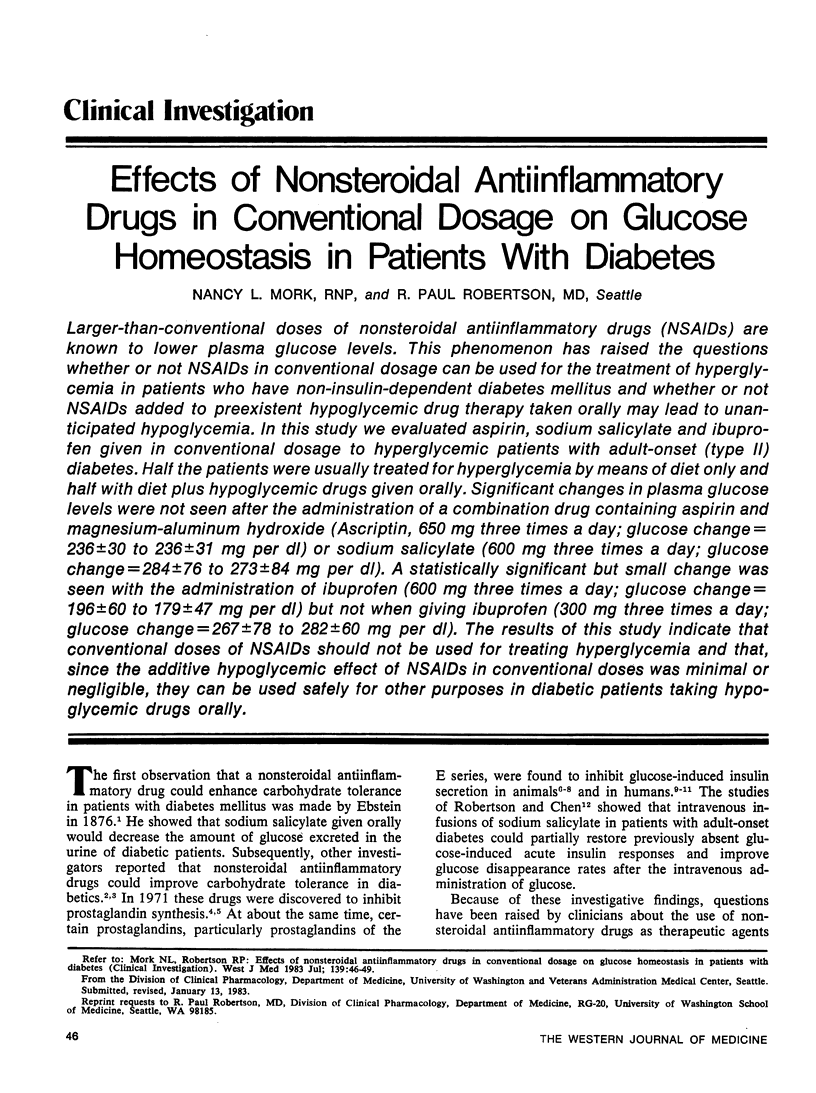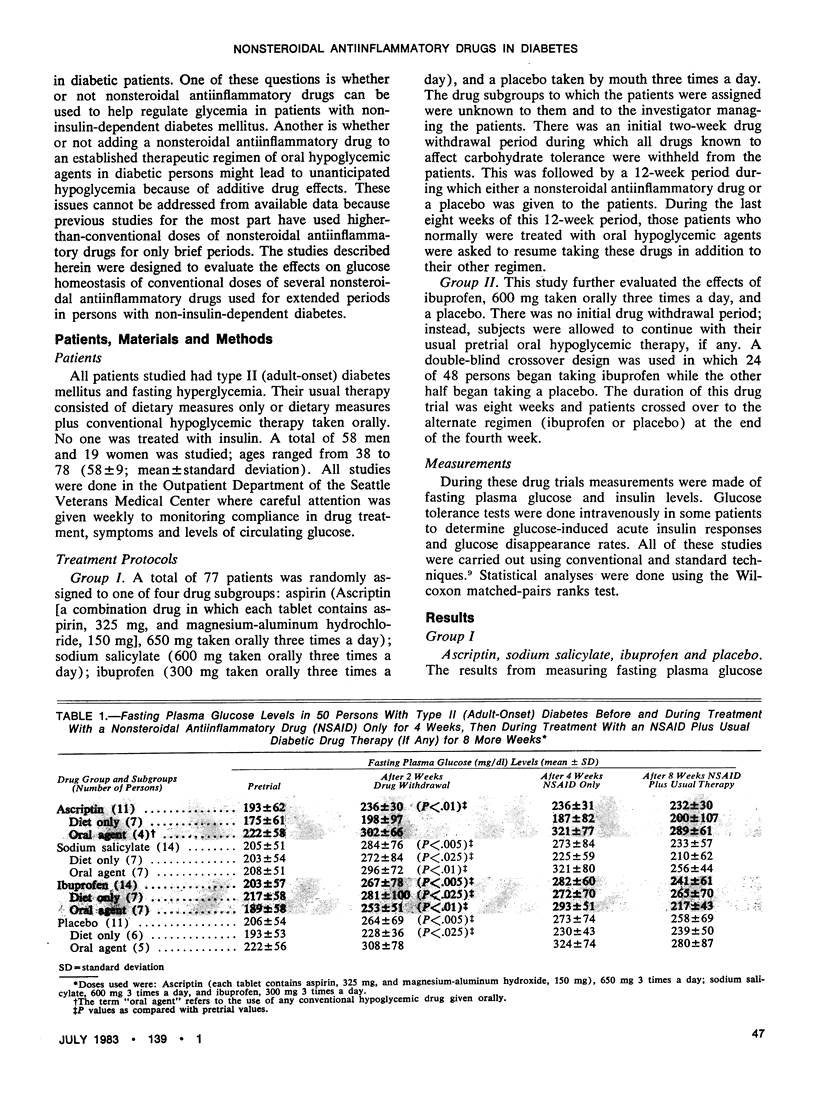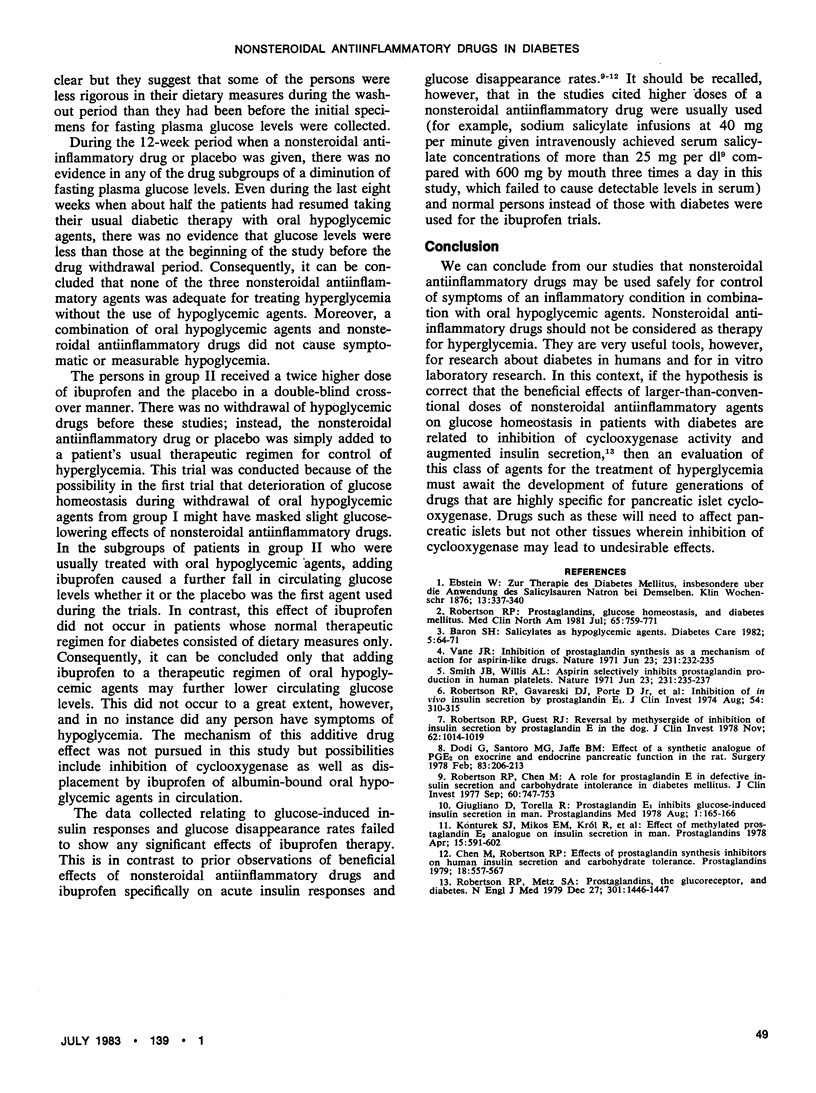Abstract
Larger-than-conventional doses of nonsteroidal antiinflammatory drugs (NSAIDs) are known to lower plasma glucose levels. This phenomenon has raised the questions whether or not NSAIDs in conventional dosage can be used for the treatment of hyperglycemia in patients who have non-insulin-dependent diabetes mellitus and whether or not NSAIDs added to preexistent hypoglycemic drug therapy taken orally may lead to unanticipated hypoglycemia. In this study we evaluated aspirin, sodium salicylate and ibuprofen given in conventional dosage to hyperglycemic patients with adult-onset (type II) diabetes. Half the patients were usually treated for hyperglycemia by means of diet only and half with diet plus hypoglycemic drugs given orally. Significant changes in plasma glucose levels were not seen after the administration of a combination drug containing aspirin and magnesium-aluminum hydroxide (Ascriptin, 650 mg three times a day; glucose change = 236±30 to 236±31 mg per dl) or sodium salicylate (600 mg three times a day; glucose change=284±76 to 273±84 mg per dl). A statistically significant but small change was seen with the administration of ibuprofen (600 mg three times a day; glucose change=196±60 to 179±47 mg per dl) but not when giving ibuprofen (300 mg three times a day; glucose change=267±78 to 282±60 mg per dl). The results of this study indicate that conventional doses of NSAIDs should not be used for treating hyperglycemia and that, since the additive hypoglycemic effect of NSAIDs in conventional doses was minimal or negligible, they can be used safely for other purposes in diabetic patients taking hypoglycemic drugs orally.
Full text
PDF



Selected References
These references are in PubMed. This may not be the complete list of references from this article.
- Baron S. H. Salicylates as hypoglycemic agents. Diabetes Care. 1982 Jan-Feb;5(1):64–71. doi: 10.2337/diacare.5.1.64. [DOI] [PubMed] [Google Scholar]
- Chen M., Robertson R. P. Effects of prostaglandin synthesis inhibitors on human insulin secretion and carbohydrates tolerance. Prostaglandins. 1979 Oct;18(4):557–567. doi: 10.1016/0090-6980(79)90023-6. [DOI] [PubMed] [Google Scholar]
- Dodi G., Santoro M. G., Jaffe B. M. Effect of a synthetic analogue of PGE2 on exocrine and endocrine pancreatic function in the rat. Surgery. 1978 Feb;83(2):206–213. [PubMed] [Google Scholar]
- Giugliano D., Torella R. Prostaglandin E1 inhibits glucose-induced insulin secretion in man. Prostaglandins Med. 1978 Aug;1(2):165–166. doi: 10.1016/0161-4630(78)90043-5. [DOI] [PubMed] [Google Scholar]
- Konturek S. J., Mikoś E. M., Król R., Wierzbicki Z., Dobrzańska M. Effect of methylated prostaglandin E2 analogue on insulin secretion in man. Prostaglandins. 1978 Apr;15(4):591–602. doi: 10.1016/0090-6980(78)90055-2. [DOI] [PubMed] [Google Scholar]
- Robertson R. P., Chen M. A role for prostaglandin E in defective insulin secretion and carbohydrate intolerance in diabetes mellitus. J Clin Invest. 1977 Sep;60(3):747–753. doi: 10.1172/JCI108827. [DOI] [PMC free article] [PubMed] [Google Scholar]
- Robertson R. P., Gavareski D. J., Porte D., Jr, Bierman E. L. Inhibition of in vivo insulin secretion by prostaglandin E1. J Clin Invest. 1974 Aug;54(2):310–315. doi: 10.1172/JCI107766. [DOI] [PMC free article] [PubMed] [Google Scholar]
- Robertson R. P., Guest R. J. Reversal by methysergide of inhibition of insulin secretion by prostaglandin E in the dog. J Clin Invest. 1978 Nov;62(5):1014–1019. doi: 10.1172/JCI109205. [DOI] [PMC free article] [PubMed] [Google Scholar]
- Robertson R. P., Metz S. A. Sounding board. Prostaglandins, the glucoreceptor, and diabetes. N Engl J Med. 1979 Dec 27;301(26):1446–1447. doi: 10.1056/NEJM197912273012612. [DOI] [PubMed] [Google Scholar]
- Robertson R. P. Prostaglandins, glucose homeostasis, and diabetes mellitus. Med Clin North Am. 1981 Jul;65(4):759–771. doi: 10.1016/s0025-7125(16)31496-1. [DOI] [PubMed] [Google Scholar]
- Smith J. B., Willis A. L. Aspirin selectively inhibits prostaglandin production in human platelets. Nat New Biol. 1971 Jun 23;231(25):235–237. doi: 10.1038/newbio231235a0. [DOI] [PubMed] [Google Scholar]
- Vane J. R. Inhibition of prostaglandin synthesis as a mechanism of action for aspirin-like drugs. Nat New Biol. 1971 Jun 23;231(25):232–235. doi: 10.1038/newbio231232a0. [DOI] [PubMed] [Google Scholar]


